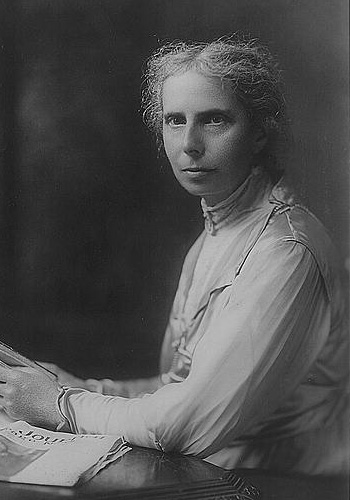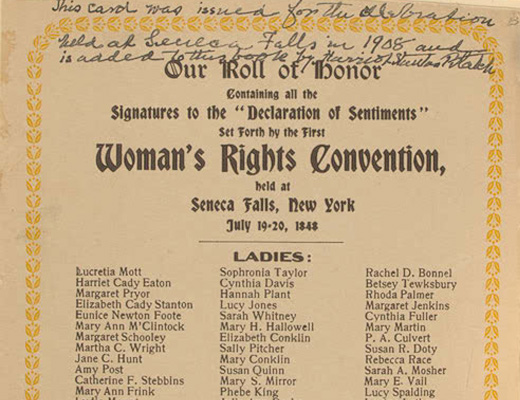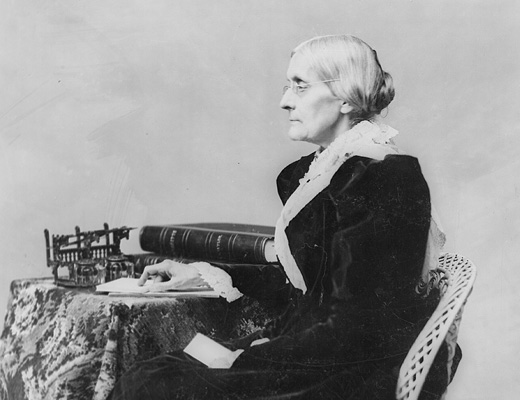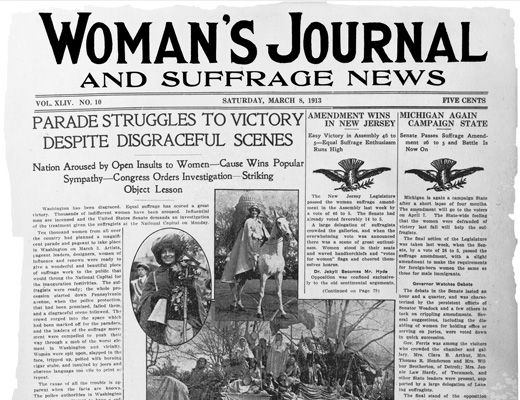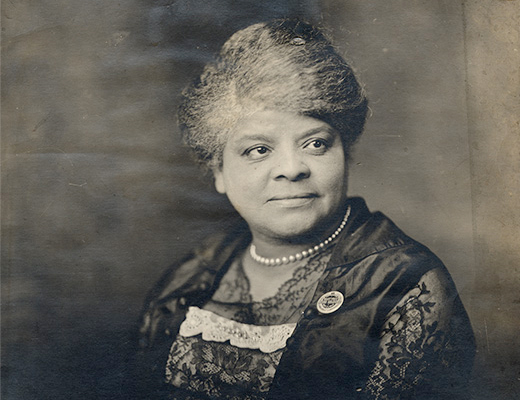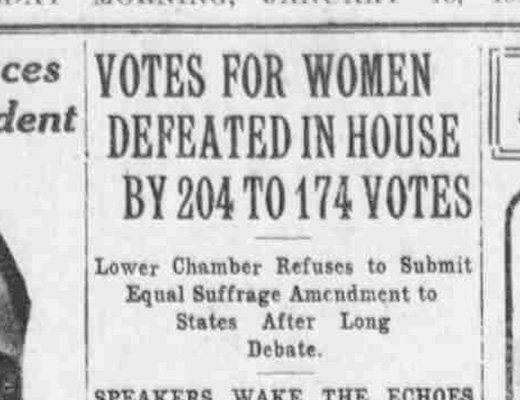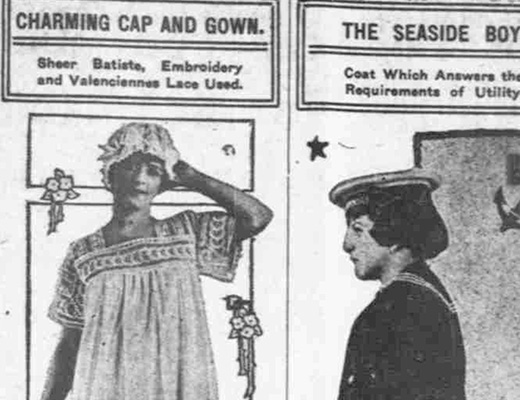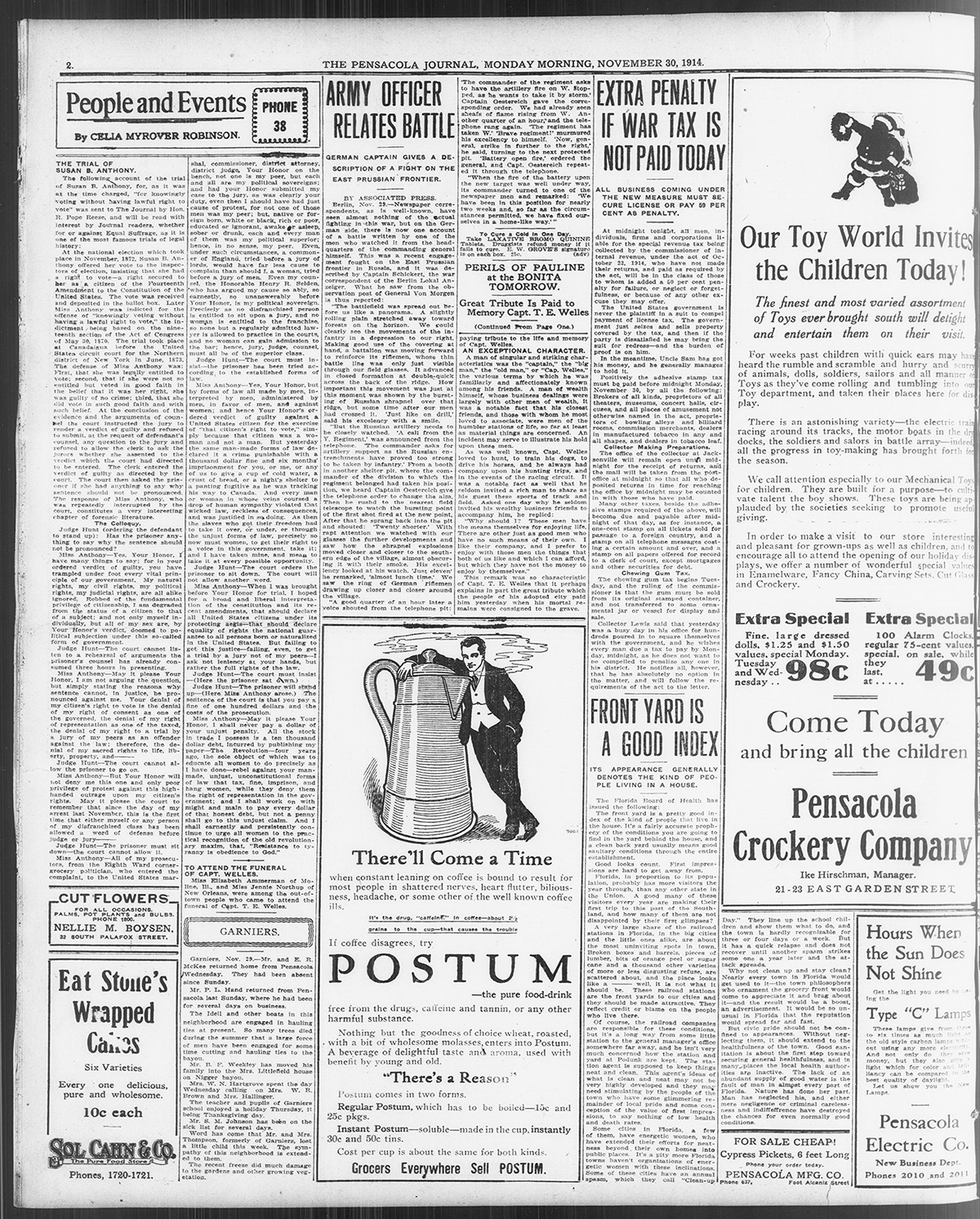In 1872, Susan B. Anthony was tried for voting in the presidential election near her home in Rochester, New York. She justified her vote using the first of the strategies that suffragists would employ: the Constitution itself, and notably the newly enacted Fourteenth Amendment. The press took sides in the trial and over the issue of woman’s suffrage itself.
“The Trial of Susan B. Anthony.” The Pensacola Journal. Nov. 30, 1914. Library of Congress
Questions
Annotate this Image
Directions: Analyze the Daily Graphic’s illustration of Susan B. Anthony, utilizing the magnifier to help you. Then use the annotation tool to take notes on the following questions:
- Which details of Susan B. Anthony’s costume and demeanor did the cartoonist use to attack her?
- Which types of “women’s work” are the men to the right of Anthony doing?
- What is the profession of the woman to the left of Anthony?
- What events appear to be taking place in the background?
- What is the main message of the illustration and how does the artist convey it?
Download the notes to share with your class.
Source: “The Woman Who Dared” by Thomas Wust. The Daily Graphic. June 5, 1873. Library of Congress
Use the toggle button above to switch to Magnify Mode. Magnify mode will help you see finer detail in the image.
Switch back to Annotate Mode to create your annotations with click and drag.
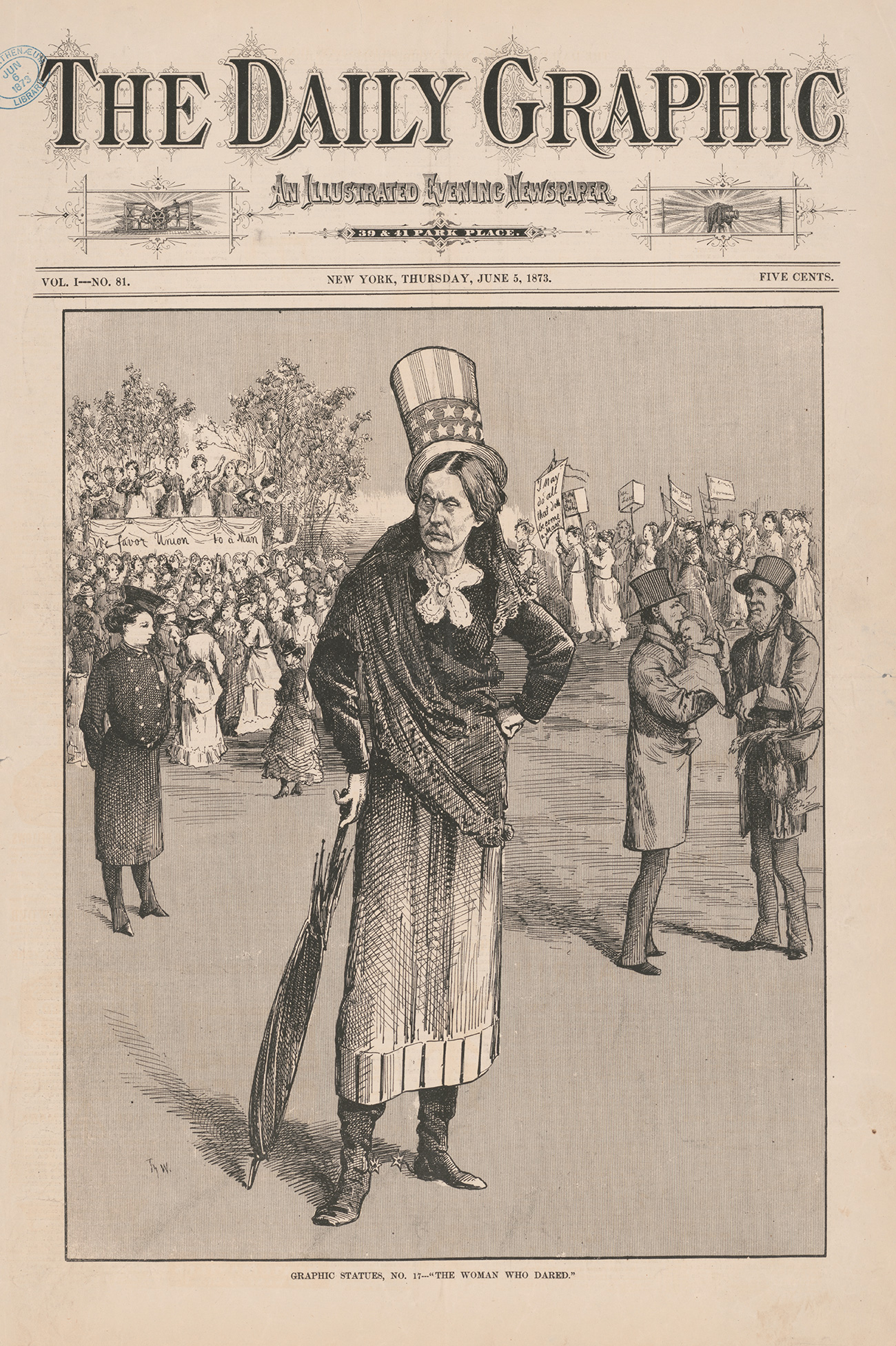
Your Annotations
